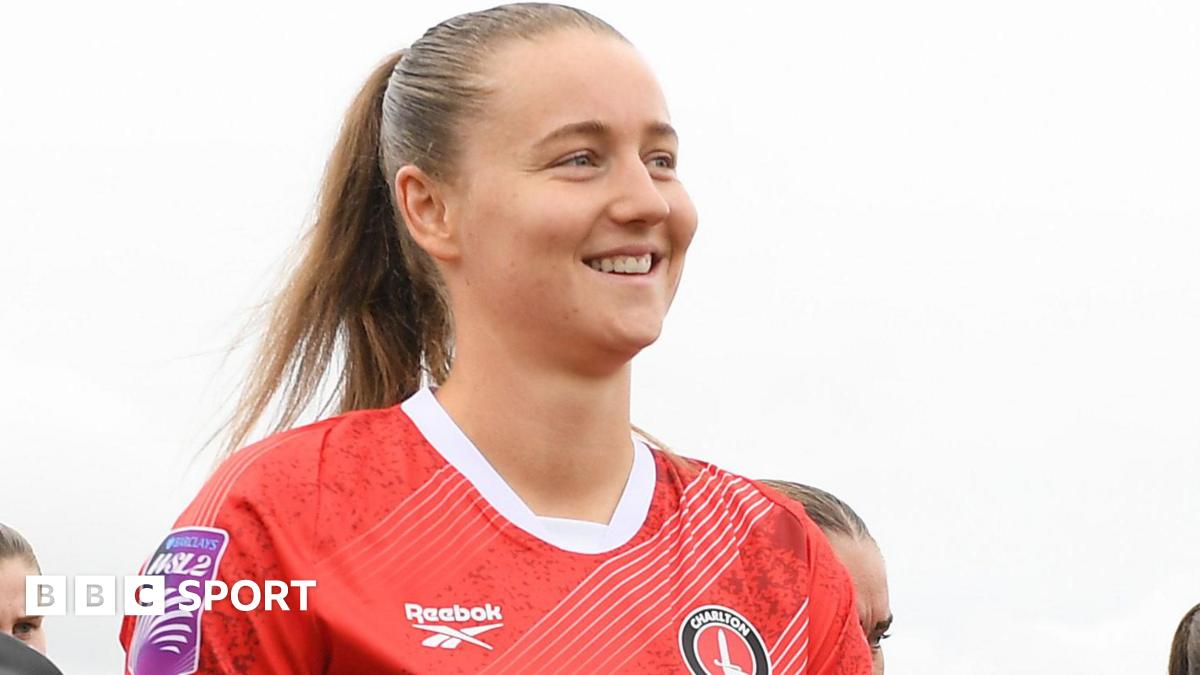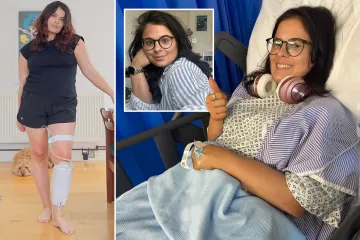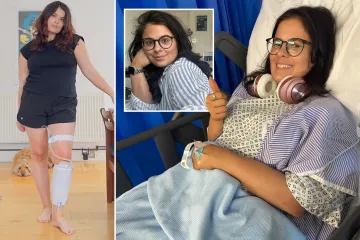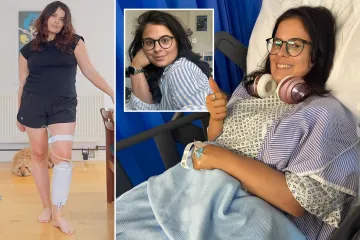Gutsy move to increase housing and oil drilling. But not high-speed rail
SACRAMENTO — Some witty person long ago gave us this immortal line: “No man’s life, liberty or property are safe while the legislature is in session.”
Humorist Will Rogers usually is credited — wrongly. Mark Twain, too, falsely.
The real author was Gideon J. Tucker, a former newspaper editor who founded the New York Daily News. He later became a state legislator and judge, and he crafted the comment in an 1866 court opinion.
Anyway, Californians are safe from further legislative harm for now. State lawmakers have gone home for the year after passing 917 bills. Gov. Gavin Newsom signed 794 (87%) and vetoed 123 (13%).
I’m not aware of any person’s life being jeopardized. Well, maybe after the lawmakers and governor cut back Medi-Cal healthcare for undocumented immigrants to save money.
One could argue — and many interests did — that what the Legislature did to increase housing availability made some existing residential neighborhoods less safe from congestion and possible declining property values.
But kudos to the lawmakers and governor for enacting major housing legislation that should have been passed years ago.
Public pressure generated by unaffordable costs — both for homebuyers and renters — spurred the politicians into significant action to remove regulatory barriers and encourage much more development. The goal is to close the gap between short supply and high demand.
But legislative passage was achieved over stiff opposition from some cities — especially Los Angeles — that objected to loss of local control.
“It’s a touchy issue that affects zoning and is always going to be controversial,” says state Sen. Scott Wiener (D-San Francisco), who finessed through a bill that will allow construction of residential high-rises up to nine stories near transit hubs such as light-rail and bus stations. The measure overrides local zoning ordinances.
Wiener had been trying unsuccessfully for eight years to get similar legislation passed. Finally, a fire was lit under legislators by their constituents.
“The public understands we’ve screwed ourselves by making it so hard to build homes,” Wiener says.
But to win support, he had to accept tons of exceptions. For example, the bill will affect only counties with at least 15 passenger rail stations. There are eight: Los Angeles, Orange, San Diego, San Francisco, San Mateo, Santa Clara, Alameda and Sacramento.
“Over time it will have a big effect, but it’s going to be gradual,” Wiener says.
Dan Dunmoyer, who heads the California Building Industry Assn., calls it “a positive step in the right direction.”
Yes, and that direction is up rather than sideways. California could accommodate a cherished ranch-house lifestyle when the population was only a third or half the nearly 40 million people it is today. But sprawling horizontally has become impossibly pricey for too many and also resulted in long smog-spewing commutes and risky encroachment into wildfire country.
Dozens of housing bills were passed and signed this year, ranging from minutia to major.
The Legislature continued to peck away at the much-abused California Environmental Quality Act (CEQA). Opponents of projects have used the act to block construction for reasons other than environmental protection. Local NIMBYs — ”Not in my backyard” — have resisted neighborhood growth. Businesses have tried to avoid competition. Unions have practiced “greenmail” by threatening lawsuits unless developers signed labor agreements.
Another Wiener bill narrowed CEQA requirements for commercial housing construction. It also exempted from CEQA a bunch of nonresidental projects, including health clinics, manufacturing facilities and child-care centers.
A bill by Assemblymember Buffy Wicks (D-Oakland) exempted most urban infill housing projects from CEQA.
You can’t argue that the Legislature wasn’t productive this year. But you can spar over whether some of the production was a mistake. Some bills were both good and bad. That’s the nature of compromise in a functioning democracy.
One example: The state’s complex cap-and-trade program was extended beyond 2030 to 2045. That’s probably a good thing. It’s funded by businesses buying permits to emit greenhouse gases and pays for lots of clean energy projects.
But a questionable major piece of that legislation — demanded by Newsom — was a 20-year, $1-billion annual commitment of cap-and-trade money for California’s disappointing bullet train project.
The project was sold to voters in 2008 as a high-speed rail line connecting Los Angeles and San Francisco. It’s $100 billion over budget and far behind its promised 2020 completion. No tracks have even been laid. The new infusion of cap-and-trade money will merely pay for the initial 171-mile section between Merced and Bakersfield, which the state vows to open by 2033. Hot darn!
Newsom muscled through the bill at the last moment. The Legislature should have taken more time to study the project’s future.
One gutsy thing Democratic legislators and the governor did — given that “oil,” among the left, has become the new hated pejorative sidekick of “tobacco” — was to permit production of 2,000 more wells annually in oil-rich Kern County.
It was part of a compromise: Drilling in federal offshore waters was made more difficult by tightening pipeline regulations.
Credit the persistent Sen. Shannon Grove, a conservative Republican from Bakersfield who is adept at working across the aisle.
“Kern County knows how to produce energy,” she told colleagues during the Senate floor debate, citing not only oil but wind, solar and battery storage. “We are the experts. We are not the enemy.”
But what mostly motivated Newsom and legislators was the threat of even higher gas prices as two large California oil refineries prepare to shut down. Most Democrats agreed that the politically smart move was to allow more oil production, even as the state attempts to transcend entirely to clean energy.
Let’s not forget the most important bill the Legislature annually passes: the state budget. This year’s totaled $325 billion and allegedly covered a $15-billion deficit through borrowing, a few cuts and numerous gimmicks.
Nonpartisan Legislative Analyst Gabriel Petek last week projected deficit spending of up to $25 billion annually for the next three years.
In California, no state bank account is safe when the Legislature is in session.
What else you should be reading
The must-read: Sen. Scott Wiener to run for congressional seat held by Rep. Nancy Pelosi
California vs. Trump: Federal troops in San Francisco? Locals, leaders scoff at Trump’s plan
The L.A. Times Special: One of O.C.’s loudest pro-immigrant politicians is one of the unlikeliest
Until next week,
George Skelton
—
Was this newsletter forwarded to you? Sign up here to get it in your inbox.
Rhian Wilkinson: ‘Great young players’ a glimpse of Wales future
The eight uncapped players in the Wales squad are Mia Ross, Annie Wilding, Gwen Zimmerman, Scarlett Hill and Amy Richardson, who get their first call-ups, while Poppy Soper, Teagan Scarlett and Tianna Teisar are hoping to make their Wales debuts having been involved with previous squads.
Charlton Athletic midfielder Ross, who has played for England at under-19 and under-23 level, might have played for Wales already were it not for injury.
“Mia, firstly, is a fantastic person. I’ve been in communication with Mia pretty much since I got the job. I’ve been watching her,” said Wilkinson.
“I think she’s got a vision and an understanding of space that’s always really interested me and intrigued me, and it’s a big decision to choose a nationality to play for.
Wilkinson added both player and coach had taken their time and had lots of good conversations before commiting.
“Equally no-one will come into this squad if they’re not the right person for this squad. So yes, she was part of the England pathway, but there’s a type of person that I know can fit in well with this Welsh team,” the head coach explained.
“We have to keep our Welsh heritage, our Welsh understanding strong, that connection and passion for the flag, for the badge, has to be paramount. If that person that I’m looking at doesn’t have that, then I stop recruiting them.
“And from the beginning, Mia’s been very clear that this was something she was interested in, that she felt very strongly about, and we haven’t forced or pushed those conversations, it’s happened quite naturally, and she then got injured.
“So we gave her space and now she’s back playing well, and we’re really looking forward to having her for the first time in with the group.”
Ukraine does not need a NATO Article 5-like guarantee | Russia-Ukraine war
In recent months, a new baseline idea has taken hold in European and United States debates on Ukraine: “Article 5‑like” guarantees. In March, Italy’s Prime Minister Giorgia Meloni was the first to suggest a mechanism inspired by Article 5 of the NATO Charter, which provides for collective action in the event of an attack on a member. US President Donald Trump’s team then promoted a US “Article 5‑type” guarantee outside NATO in August. In September, French President Emmanuel Macron capped this shift by gathering 26 European partners in Paris to pledge a post-war “reassurance force”.
These proposals may sound reassuring, but they should not. In a world where we face nightly drone raids, blurred lines at sea, and constant pressure on critical infrastructure, replicating NATO’s words without NATO’s machinery would leave Ukraine exposed and Europe no safer.
Russia’s activity inside NATO territory has moved from rare to routine. On September 10, two dozen Russian-made drones crossed into Polish airspace during a wider strike on Ukraine; NATO jets shot down those that posed a threat, and Poland activated Article 4 of the NATO Charter, which allows for consultations in the event of a threat.
In the following weeks, Denmark temporarily shut down several airports after repeated drone sightings. Days later, French sailors boarded a tanker suspected of being part of a Russia-linked “shadow fleet” and of taking part in the drone disruptions.
Germany also reported coordinated drone flights over a refinery, a shipyard, a university hospital, and the Kiel Canal. Meanwhile, across the Baltic Sea, months of damage to undersea cables and energy links have deepened concern.
Each of these episodes is serious. Yet, none of them clearly crossed the legal threshold that would have triggered collective defence under Article 5.
That is the core problem with “NATO‑style” guarantees. Article 5 is powerful because it establishes that an attack on one is an attack on all, but it still needs a political process that begins with consultations and leaves each ally free to decide how to respond. It was written for visible aggression: Columns of troops on a border; ships firing across a line; fighter jets attacking territory.
Today’s reality is different. Drones launched from outside Ukrainian territory, one-night incursions over allied infrastructure, or cable cuts by vessels are meant to sit just under formal thresholds. A copy of Article 5 outside NATO’s integrated command, without a standing allied presence or pre-agreed rules for Ukraine, would be even slower and weaker than the original.
When mulling a security mechanism for Kyiv, allies need to recognise that it is no longer a security consumer; it is a security contributor. After Poland’s incident, allies began asking for Ukrainian counter-drone know-how. Ukrainian specialists have deployed to Denmark to share tactics for fusing sensors, jamming, and using low‑cost interceptors.
NATO leaders now say openly that Europe must learn how to defeat cheap drones without firing missiles that cost hundreds of thousands of euros. This is a notable shift: Ukraine is not just receiving protection; it is helping to build it.
Ukraine’s allies also need to remember what happened in 1994. Under the Budapest Memorandum, Kyiv gave up the world’s third‑largest nuclear arsenal in exchange for political “security assurances” from several countries, including Russia and the US. Those assurances were not legally binding.
In 2014, Russia seized Crimea and fuelled war in Donbas while denying its troops were there, using soldiers without insignia to keep the situation ambiguous. Even if Ukraine had been in NATO then, that ambiguity would have raised doubts about whether Article 5 applied. In 2022, Russia invaded openly.
Clearly, non-enforceable promises and debates over thresholds do not stop a determined aggressor. This is why we need guarantees that trigger action automatically, not statements that can be argued over in the moment.
What would work is a package that is tougher than Article 5 on the issues that matter against a sub‑threshold attacker: Time, automaticity, presence, intelligence, and production.
First, there needs to be automatic triggers. A legally ratified “if‑then” mechanism should activate within hours when clear markers are met: State‑origin drones or missiles entering Ukrainian airspace from outside; mass drone incursions into border regions; destructive cyberattacks or sabotage against defined critical infrastructure. The initial package would include both military steps and heavy sanctions. Consultations would adjust the response, not decide whether there will be one.
Second, there needs to be a joint aerial and maritime shield that treats Ukrainian skies and nearby seas as one operating picture. Allies need to keep persistent airborne radar and maritime patrol coverage; fuse sensors from low to high altitude; delegate rules for downing drones along agreed corridors; combine electronic warfare, directed‑energy and radio‑frequency tools, and low‑cost interceptors with classic surface‑to‑air missiles. The test is economic: Europe must make Russian drone raids expensive for Moscow, not for itself.
Third, there must be visible presence and ready logistics. Before a ceasefire is concluded, allies need to build forward logistics: ammunition, spare parts, and maintenance hubs in Poland and Romania with a standing air bridge into Ukraine. Following an agreed ceasefire, they can rotate multinational detachments, air defence crews, maritime patrol teams, and engineers through Ukrainian ports and airfields. The aim would be not to establish permanent bases, but to ensure any renewed attack instantly draws in several capitals.
Fourth, there needs to be an intelligence compact. Allies need to move from ad hoc sharing to an institutional arrangement with Ukraine that integrates satellite, signals, open‑source, and battlefield sensors into common, near‑real‑time products. Fast attribution is central: The right to defend yourself relies on what you can prove, and deterrence relies on an adversary knowing you can prove it quickly.
Fifth, there needs to be a production deal. Multi‑year funding should anchor co‑production in Ukraine of drones, air‑defence components, and artillery rounds, alongside European and US plants making the high‑end systems Ukraine and Europe still lack. Allies should commit to buy Ukrainian systems at scale and tie guarantees to contracted output, not to communiques. Empty magazines make empty promises.
These measures would not copy the letter of Article 5. They would meet a different threat with tools that can counter it. Europe’s recent experience, in Poland’s skies, at German shipyards, at Danish airports, and in the Baltic Sea shows how an adversary can apply steady pressure without triggering classic definitions of “armed attack”.
If Ukraine receives only “NATO‑style” language, it will inherit those same gaps outside the alliance. If instead Ukraine and its partners lock in automatic responses, a shared air picture, visible presence, real‑time intelligence, and an industrial base that keeps pace, they will build something stronger: A guarantee that works in the world as it is, not the world at it was.
The views expressed in this article are the author’s own and do not necessarily reflect Al Jazeera’s editorial stance.
Son of ex-England footballer Stuart Pearce dies in tractor crash
Dawn LimbuWest of England
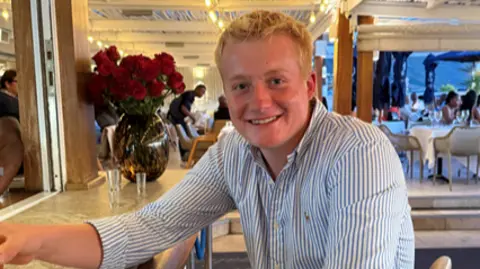 BBC
BBCThe son of ex-England footballer Stuart Pearce has died in a tractor crash.
Harley Pearce, 21, from Marlborough in Wiltshire, died in the crash in Gloucestershire last week, police said.
Harley’s family have issued a tribute to him saying: “Our family is truly shocked and utterly heartbroken at the loss of our cherished son and devoted brother, Harley.”
The crash happened on Old Birdlip Hill, A417, in Witcombe, near Gloucester at 14:30 BST on Thursday.
Harley’s family described him as “a golden boy with an infectious smile”.
“A soul who left an unforgettable imprint on all who knew him,” continued the tribute.
“This shocking tragedy will leave a huge hole in the hearts of those who were fortunate enough to have known him.
“With a quiet, understated strength and deep kindness, we are so proud of the young man he had become, exhibiting a wonderful work ethic and entrepreneurial spirit in the farming industry.
“He will always be our shining star. Rest in peace, our beautiful son and brother. You will never ever be forgotten.”
 Getty
GettyHarley ran his own farming company, Harley Pearce Agricultural Services.
His father, Stuart Pearce, played more than 400 games for Nottingham Forest. He also played for Coventry, Newcastle, West Ham and Manchester City.
The former electrician won 78 international caps and later managed Forest, Manchester City and the Great Britain team at the London 2012 Olympics.
He also had a stint as England’s caretaker manager.
The 62-year-old, who currently works as a pundit for Talksport, recently suffered a medical emergency on a flight from Las Vegas to London.
The flight had to be diverted to St John’s International Airport in Canada for him to have treatment.
Two huge cities north of London tipped for direct trains to Europe

MANCHESTER and Birmingham could soon get Channel Tunnel trains.
Virgin has revealed that it wants to operate services from Manchester and Birmingham to Paris, Brussels and Amsterdam, if it wins the bid to run cross-channel services.
If the routes were launched, the trains would need to run via the West Coast Main Line and then divert across north London to join the Channel Tunnel route at Stratford.
A Virgin spokesperson said: “Reopening the stations to be able to accommodate international services requires commitment and resources from all parties and potential competitors involved.
“But if the stations are opened, Virgin will stop in Kent.”
Virgin has also pledged to reopen Ashford International and Ebbsfleet International stations, which have both been closed since 2020.
Read more on travel inspo
Virgin would then run 20 services each day from London St Pancras to Paris and Amsterdam via Brussels, within the next five years.
In the future, Virgin said it could also add services to Germany and Switzerland too.
In August, Virgin signed a deal for 12 new high-speed trains.
The “binding exclusivity” with Alstom means Virgin would get a dozen Avelia Stream trains to use for journeys into mainland Europe.
Virgin is just one of several companies bidding to run services across the channel; other companies include Gemini Trains and Ferrovie dello Stato Italiane (FS).
The latter has said they would look to restart train routes from Ashford International Station as well.
If Ferrovie dello Stato Italiane was successful in its bid to gain a Channel Tunnel contract, they’d launch trains from between London and Paris from 2029 onwards, with a stop in Ashford.
Meanwhile, Gemini Trains has revealed plans to launch 10 trains from the UK to Europe, including routes to Paris and Brussels.
The ORR will make a decision about the future of cross-channel services, by either allowing a new operator to run services or allow Eurostar to grow its services.
If Eurostar did expand, the operator has expressed that it would like to run services to a number of new destinations, such as Frankfurt and Geneva.
A final decision is set to be made on October 31.
Why Virgin taking on Eurostar is good for consumers…
The Sun’s Head of Travel Lisa Minot explains how this is good news for UK travellers
WHILE a second operator on the channel tunnel could only be a positive move for travellers, there are significant challenges before this could become reality.
Eurostar currently has a monopoly on the route and competition would potentially bring more choice, lower prices and new routes.
Eurostar itself is a shadow of the company it was in its glory days with direct routes to Disneyland Paris, Lyon, Avignon and Marseille plus its fabulous ski train to the Alps.
While the pandemic brought the company almost to its knees, it has been steadily getting back on its feet and the merger with Belgian operator Thalys has opened up fast train services to Germany.
But the constrictions on space at St Pancras and the maintenance depot at Temple Mills plus the potential disruption when the new European Entry Exit System finally arrives mean there are still significant problems that need to be addressed.
In other train news, one of the UK’s most beautiful underground train stations was inspired by Russia.
Plus, a new UK train service is set to connect two major cities and tickets are a bargain.
BBC axed show Mock the Week confirms major comeback 20 years after debut
Iconic panel show Mock the Week is set to return to screens in 2026, four years after it was axed by the BBC, and will be broadcast on a free-to-air rival challenge
Mock the Week was axed from television four years ago, but the BBC panel show is now poised for a spectacular return next year. The satirical news commentary programme, which launched the careers of Hugh Dennis, Frankie Boyle, and Russell Howard, is scheduled to make its comeback on screens in 2026.
Initially debuting back in 2005, Mock the Week offered a comedic take on weekly news stories and quickly established itself as a broadcasting favourite. The half-hour comedy format eventually concluded in 2022 following 17 years on air, but its return has now been officially announced.
This time around, the programme will air on TLC, as the channel transitions to free-to-air broadcasting in the UK come January 2026, delivering additional scripted and unscripted programming, reports the Express.
Warner Bros. Discovery released a statement confirming the show’s revival, produced by Angst Productions, would provide the “much-loved” format with a “new look”.
Cast announcements remain pending, though supporters are eager to witness Hugh, Frankie, Russell, and fellow comedian Andy Parsons grace screens once again.
TLC operates as a television network in America, which Warner Bros. Discovery has recently chosen to introduce on Freeview in Britain, simultaneously discontinuing HGTV.
The UK debut of TLC will additionally showcase scripted programming including The Big Bang Theory and its enduring comedy-drama offshoot, Young Sheldon.
The show, which first aired in 2005, was cancelled back in 2022 with host Dara O’Briain sharing a sad statement at the time. “That’s it folks, the UK has finally run out of news,” he said.
“The storylines were getting crazier and crazier – global pandemics, divorce from Europe, novelty short-term prime ministers. It couldn’t go on.”
Earlier this year, Mock the Week star Milton Jones announced that he was ‘cancer free’ after undergoing surgery. The stand-up comic cancelled a number of dates earlier this year after being diagnosed with prostate cancer.
However, he said in August that he is “in a completely different place” now. He said in a statement: “A few months ago, I had to stop my tour Ha! Milton because I needed treatment for prostate cancer. I’m glad to say I’ve had that treatment and am now cancer free!”
Milton continued to the PA News Agency: “So, many thanks to all the doctors and nurses who helped me get better – I couldn’t do their job (I tried, but apparently you have to be qualified).
“A big thank you to my family, friends, all those who helped reschedule things and the many others who have been so nice to me.
Join The Mirror’s WhatsApp Community or follow us on Google News , Flipboard , Apple News, TikTok , Snapchat , Instagram , Twitter , Facebook , YouTube and Threads – or visit The Mirror homepage.
Think It’s Too Late to Buy This Leading Tech Stock? Here’s 1 Reason Why There’s Still Time.
Shares may look pricey, but Broadcom is still one of the top AI investments.
As one of the leading semiconductor companies, Broadcom (AVGO -1.24%) has handily outperformed the market recently. It’s up 51% year to date (as of Oct. 17), while the S&P 500 index has risen 13%.
Following such a rally, this might not seem like the ideal time to invest in Broadcom — the stock is trading near its all-time high. Given the tech giant’s growth, however, its stock can continue to climb. Here’s one reason why.

Image source: Getty Images.
A growing list of high-value partnerships
On Oct. 13, Broadcom and OpenAI, the developer of ChatGPT, announced a partnership on 10 gigawatts of custom artificial intelligence (AI) accelerators. Broadcom will be helping OpenAI design its own custom chips, and this is just the latest of several AI companies that are working with Broadcom for that purpose.
Broadcom makes custom AI chips for three major hyperscalers, believed to be Alphabet, Meta Platforms, and ByteDance, the parent company of TikTok. It’s seeing increasing chip demand from these companies, and CEO Hock Tan has also mentioned a fourth major customer that has placed $10 billion worth of orders. While there was speculation this mystery customer was OpenAI, Broadcom has now said that’s not the case.
Broadcom’s share price has been soaring, but it’s not fueled by hype. Revenue is on the rise, particularly its AI revenue, which increased 63% year over year to $5.2 billion in Q3 2025. Tech companies are increasingly turning to Broadcom for custom chips that better fit their needs and to avoid being overly reliant on graphics processing units (GPUs) from Nvidia.
During Broadcom’s last earning call, Tan mentioned that the company has an order backlog of over $110 billion, an indicator that its excellent revenue growth should continue. Don’t let the valuation deter you — Broadcom’s crucial role in AI development makes it one of the stronger tech companies to invest in.
Lyle Daly has positions in Broadcom and Nvidia. The Motley Fool has positions in and recommends Alphabet, Meta Platforms, and Nvidia. The Motley Fool recommends Broadcom. The Motley Fool has a disclosure policy.
UK’s ‘most beautiful town’ set to star in huge new Christmas movie with Hollywood stars
ONE of Yorkshire’s prettiest towns is set for superstardom this December, as it stars in a new Christmas film featuring some of Hollywood’s top actors.
Earlier this year, Hollywood stars like Kiefer Sutherland, Rebel Wilson and EastEnders‘ Danny Dyer descended on Knaresborough for the upcoming movie, Tinsel Town.
Between January and February 2025, cast and crew were spotted in the Yorkshire town, in areas like Castlegate, Riverside, and Green Dragon Yard.
Filming of the Sky Original Christmas movie meant that the festive decorations were up for months longer than usual.
The film, set to be released n November 28, will see Kiefer Sutherland play Bradley Mack, a failed Hollywood action star ending up in a small, snow-dusted village to star in the town’s eccentric production of Cinderella.
It’s here that he encounters a number of oddball locals, one of whom is no-nonsense choreographer Jill, played by Rebel Wilson.
It’s no wonder Knaresborough was picked as a filming location, as The Sun’s Katrina Turrill, who hails from the town, reckons it’s the “most beautiful town in the country” and “picture perfect”.
Knaresborough has pretty waterfront cafes and the opportunity to canoe down the river, while watching steam trains travel over the viaduct.
Katrina said: “If you venture down by the river from either Bond End or walking down the steps at the castle you’ll stand at the foot of the iconic viaduct.
“Amongst the cafes and houses are two boat hire places – Blenkhorn’s and Marigold Cafe & Boating. Both are open daily, weather permitting, and are a great way to soak up the stunning scenery.
Most read in Best of British
“No visit to Knaresborough is complete without heading to Knaresborough Castle for the best view of the viaduct.
“You don’t need to pay to enter the castle grounds, and I recommend seeing the view during the day and at night time, with the viaduct all lit up.”
Katrina also suggested checking out the many pubs in the area from Blind Jack’s in the market square, to Carriages.
As for attractions, there’s Mother Shipton’s Cave which is named after the Yorkshire prophetess who predicted many things, including the great fire of London and the black death.
It’s also the oldest tourist attraction to charge a fee in England, and has been open to visitors since 1630.
The town is also lobbying for cash to buy a tourist land train, which would mean visitors could easily go exploring without having to climb steep hills and steps.
A previous grant to get a land train was rejected due to “concerns over the scheme’s viability”, as reported by the BBC.
Now, the Knaresborough & District Chamber, which submitted the bid, is looking for alternative funding to get the service started.
The hope is that the land train would increase the number of visitors to all of Knaresborough, from the river to the main town.
One of the local council members told the BBC that visitors who visit usually wander around the castle and marketplace but don’t go down to the river because of the steep hill and steps.
If the land train becomes a reality, it would join other UK towns which run services generally during the summer.
Weymouth has its very own land train which runs across the promenade, meanwhile Bridlington has two trains, one which heads north, and the other, south.
Other popular destinations with land trains include Hull, Torquay, Hunstanton and Scarborough – each charges between £2-£6 per journey.
And another Yorkshire destination to add to your To Do list…

Hutton-Le-Hole is said to be one of the last unspoiled villages in the UK, thanks to its very quaint houses and attractions.
Home to just 400 locals, it has been named one of Yorkshire‘s “best looking villages” by Lonely Planet, as well as one of the UK’s prettiest by Conde Nast Traveller.
Jane Austen fans will recognise it, having featured in the Death Comes To Pemberley BBC drama.
In the summer, locals sit on the village green, with the sloped grass leading into the river to cool off.
But the village is just as beautiful in autumn with the trees turning bright orange.
Most of the sheep are free-roaming, so expect to see a few munching on the grass.
If you fancy some retail therapy, The Chocolate Factory, which opened 20 years ago, is one of the top attractions.
Despite being small, there are a number of places you can stay like The Crown Inn and The Barn Guesthouse or a number of small B&Bs.
Here’s another Yorkshire village that looks like it is from the 18th century – where every front door is the same colour.
Plus, the pretty English town that attracts thousands of tourists a year with iconic shops and cosy barn stays.
Times of Troy: Notre Dame deserves more blame for potential end of rivalry with USC
Welcome back to the Times of Troy newsletter, where after one last rain-soaked showdown in South Bend, we pour one out for one of the great rivalries in the history of college football. After a century of meeting on the football field, USC and Notre Dame are not currently scheduled to meet again. This, by all accounts, is a terrible shame.
Outside of L.A., the college football world has placed the blame for the rivalry’s demise squarely on USC’s shoulders. Notre Dame made sure that was the case when its athletic director, Pete Bevacqua, ran to Sports Illustrated last spring, immediately after USC made an offer to renew the series for one year.
As PR moves go, it was a smart one: By firing the first missive, Bevacqua knew that Notre Dame could shape the narrative around negotiations. And ever since, as Bevacqua hoped, Notre Dame has been cast by much of the national media as valiantly attempting to save the rivalry at any cost, while USC looks like its running scared away from it.
Which is really quite ironic, if you know the recent history of how Notre Dame has handled its rivalries.
Thirteen years ago, minutes before the two schools were set to face off in South Bend, former Notre Dame athletic director Jack Swarbrick famously handed then-Michigan athletic director Dave Brandon a letter as notice that Notre Dame intended to cancel the remainder of their rivalry series. It was as passive aggressive as scheduling changes get. Brandon didn’t even read the letter until after the game.
These two teams went way back, before USC even first fielded a football team. The two Midwest rivals first faced off back in 1887, when Michigan literally taught Notre Dame how to play football. (Not kidding.) Not to mention it was actually a Detroit Free Press columnist who first called Notre Dame the “Fighting Irish.” (Imagine the royalties!)
But in 2012, Notre Dame declared without any further conversation that it was backing out of the game. The reason? As part of its move to the Atlantic Coast Conference in every other sport, the Irish football program agreed to play five games against ACC schools every year.
No one at Notre Dame seemed all that concerned about history and tradition then. Swarbrick, at the time, called canceling the series “a necessary precaution,” given the future uncertainty surrounding its schedule.
Sound familiar?
Except, in this case, Notre Dame kept Purdue on its future schedule. And Michigan State. It chose to maintain its series with Navy, which had beaten the Irish just three times in the previous half-century, as well as Stanford. I wonder why.
Months later, then-Michigan coach Brady Hoke told a crowd at a booster luncheon that Notre Dame was “chickening out” of the rivalry. And he was right.
A dozen years later, Notre Dame is floating the same accusations about USC.
Except, in this case, USC has made efforts to maintain the series after moving to a much less flexible and more difficult schedule in the Big Ten. It has tried to keep the game going despite being locked into nine conference games — and with far less incentive to add strong non-conference opponents than there was in 2012. USC even amended its initial offer to extend the rivalry for multiple years, instead of just one, as a compromise.
Look, USC isn’t blameless in all of this. But no one seems to have acknowledged yet that Notre Dame hasn’t exactly helped negotiations along. It doesn’t want to move the game from October or November to September, as USC has asked — not because of tradition, as has been suggested, but purely because it’s much more convenient to Notre Dame to keep USC later in the season, when no other top programs want a team such as Notre Dame smack dab in the middle of its conference slate.
Who cares about the tradition of when the game is played, if the other option is it’s not played at all? If the Irish are so concerned about maintaining the USC rivalry, why didn’t they insist that Clemson — a team it has much less history with — play their newly signed 12-season series in mid-October?
Because Notre Dame is used to dictating the terms of engagement and getting its way. It has the flexibility of being without a conference. And it also knows it has the narrative firmly on its side. So why bother budging when the pitchforks are already pointed toward USC?
I don’t expect that to change any time soon, even as both athletic directors say they’re “optimistic” an agreement can be reached. Not unless USC is ready to capitulate. Until then, the public pressure will remain on the Trojans alone, while Notre Dame points across the bargaining table and cries chicken. Irony, be damned.
Yes … technically.
If USC wins each of its next five games to finish 10-2, you can count on the Trojans being in the 12-team field. But anything less than that, and they’re going to have a tough time making a case.
Let’s say USC only loses on the road to No. 6 Oregon from this point on. That would put the Trojans at 9-3, with just two Big Ten losses — and three overall. That’s a good season! But no team with three losses has ever made it into the Playoff, and while there’s a legitimate argument that this year will be the first, USC presumably wouldn’t have enough marquee wins to move the needle with the committee.
Michigan is currently USC’s only win over a team above .500. Nebraska, Iowa and Northwestern are all 5-2, but only one of the three has a top 25 win this season — the Huskers won their opener against No. 21 Cincinnati. The toughest test left aside from Oregon could very well be UCLA, which has won three in a row after starting 0-4.
Perhaps there’s a world where USC, with one conference loss, could end up in the Big Ten title game. But in addition to beating the Ducks, that would also require moving past either Ohio State or Indiana, neither of which have looked particularly vulnerable of late.
However you try to spin it, getting USC into the Playoff requires serious finesse. By losing to Notre Dame, the Trojans closed off the easiest path to a postseason run.
More than likely, USC’s hopes now hinge on running the table. But nothing I’ve seen recently suggests that’s a likely option. Instead, with each passing week, my 8-4 prediction is feeling just about right.
Jayden Maiava throws a pass under pressure in the second quarter against Notre Dame.
(Justin Casterline / Getty Images)
—Stop asking if Lincoln Riley is going to give up playcalling. It ain’t happening. It wasn’t that long ago that Riley’s playcalling was the main reason for his historic rise through the coaching ranks. That felt like ancient history on Saturday night, as Riley dialed up a failed trick play to star wideout Makai Lemon that ended in a game-altering fumble. Riley admitted after the game that it was “a stupid call,” which is the closest he’s come to accountability in that department. He added later that his two failed fourth-and-short calls weren’t very good either. “I’ve gotta be way better for our guys,” he said after. It’s good that he recognizes his shortcomings in this situation, but how we’ve gotten to this point, with Riley’s playcalling having a clear negative affect, I can’t quite explain. Riley has had impressive moments calling plays this season, which are easy to forget after such a bad performance. But the fact that he seems to be at his worst in the biggest moments is not the best sign for turning things around in the future. All that said, it would presumably take an intervention from one of his bosses to hand off those duties to Luke Huard. The ego hit would simply be too significant for Riley to initiate that change otherwise.
—USC struggled to protect Jayden Maiava, and it paid the price. The Trojans’ front allowed a season-high 17 pressures to Notre Dame, and Maiava completed a meager 31% of his passes and threw both of his interceptions when under pressure Saturday. The good news is that reinforcements are on the way. Starting left tackle Elijah Paige dressed for Saturday’s game, but was only available in case of emergency. Center Kilian O’Connor, meanwhile, was surprisingly listed as questionable against Notre Dame. Both should be good to go when USC takes on Nebraska in two weeks.
—USC has lost 11 straight on the road to top 25 teams, six of which came under Riley. The last win USC had against a ranked opponent on the road came in November … of 2016! And USC’s last chance this season to rectify this terrible streak will likely be in Eugene next month — a game the Trojans are, as of now, unlikely to win. That means we’re staring down the barrel of an entire decade without a win over a ranked team on the road, which is totally unacceptable for a team that sees itself as a blue blood of college football.
—After having zero rim protection a year ago, USC might have one of the best rim protectors in the Big Ten this season. Just take a look at the statline for new 7-foot-5 center Gabe Dynes from USC’s exhibition against Loyola Marymount. Dynes had six blocks, three of which came in his first 10 minutes of the game. Dynes also had nine points, eight rebounds and even three assists, as the USC took care of business in a 60-51 win. The Trojans shot just 33%, but showed that their defense can be a strength by holding Loyola Marymount to just 28% from the field. Dynes will be an important part of that equation and if he can contribute on offense, well … the sky could be the limit for the 7-footer.
Olympic sports spotlight
After losing four of six to start its Big Ten slate, USC’s women’s volleyball team bounced back in a big way over the past weekend, winning two critical matches on the road. The highlight of the weekend was a 3-1 win over No. 9 Wisconsin, USC’s best win yet of this season.
Redshirt freshman outside hitter London Wijay had a career performance in the win over Wisconsin, tying a career-high with 24 kills, while freshman libero Taylor Deckert tallied back-to-back 20-dig performances over the weekend. USC also handled Iowa in four sets, to bring its Big Ten record to 4-4 on the season.
In case you missed it
USC’s College Football Playoff hopes take a big hit in rain-soaked loss to Notre Dame
King and Kaylon Miller always believed they could rise from USC walk-ons to key roles
Depleted USC fined by Big Ten for playing running back listed ‘out’ on injury report
What I’m watching this week
Jason Bateman as Vince, Jude Law as Jake in “Black Rabbit.”
(Courtesy of Netflix)
The last time Jason Bateman got in with the wrong crowd on a Netflix show, one of the best shows of the last decade was born. I didn’t want to place “Ozark”-level expectations on “Black Rabbit,” Bateman’s new show on Netflix with Jude Law, but after watching the first two episodes, I can say with confidence that it’s off to just as strong of a start.
Law stars as a New York restaurateur whose life is upended when his estranged brother, played by Bateman, suddenly comes back into his life and drags him unwillingly into New York’s criminal underworld. The show’s tone is about as tense as it gets — think “The Bear” meets “Uncut Gems” — but if you’re in the mood for a thrill ride, then this show is worth your time.
Until next time …
That concludes today’s newsletter. If you have any feedback, ideas for improvement or things you’d like to see, email me at [email protected], and follow me on X at @Ryan_Kartje. To get this newsletter in your inbox, click here.
Trump says cease-fire intact despite flare-up between Israel, Hamas

Oct. 20 (UPI) — U.S. President Donald Trump insisted that a fragile cease-fire between Israel and Hamas remained in place after Israel carried out a series of deadly strikes in the south of the Palestinian enclave and the sides traded blame for clashes.
Speaking aboard Air Force One on Sunday evening Trump said the agreement would hold and that “rebels” that he did not identify were responsible for alleged violations, not, Hamas.
“Either way, it’s going to be handled properly. It’s going to be handled toughly, but properly,” Trump added.
The Israeli military said it struck dozens of targets through Sunday evening in retaliation for Hamas’ alleged “anti-tank missile and gunfire” that killed two soldiers in Rafah. Sources from hospitals in Gaza told the BBC that at least 44 people had been killed. Aid deliveries were suspended.
Hamas denied all knowledge of the attack in Rafah and reiterated its commitment to the cease-fire. It accused Israel of violations, warning that the attacks were jeopardizing the truce.
Israel Defense Forces announced late Sunday that the operation was over and that it was resuming “enforcement of the cease-fire” and would permit aid to begin to flow again Monday, but warned that any violation of it would be met with a “firm response.”
This was the worst setback since the deal came into force Oct. 10 came as Trump’s special envoy, Steve Witkoff, and son-in-law Jared Kushner were due to arrive in Israel on Monday to shore up the cease-fire and move the process forward. They were due to be joined by Vice President JD Vance on Tuesday.
The three were expected to meet with Israeli Prime Minister Benjamin Netanyahu and other top Israeli officials.
Before departing the United States, Kushner told CBS News that while the truce was fragile, he believed Hamas was acting in good faith to stick to the agreement and was “seriously looking for the bodies” of the 16 Israeli hostages it had promised to return but had yet to do so.
Vance also sought to explain the violence, saying some turbulence was normal in the early stages of any cease-fire. His schedule also includes meetings with hostage families and a visit to a humanitarian facility in Gaza.
“Hamas is going to fire on Israel. Israel’s going to have to respond, of course. There are going to be moments where you have people within Gaza that you’re [not] quite sure what they’re actually doing. But we think it has the best chance for sustainable peace,” he said.
Hamas, which has been struggling to recover the bodies of 28 hostages it agreed to hand back to Israel as part of the cease-fire deal, said Monday it had found the remains of a 13th hostage. Further details were as yet unavailable.
The Hidden Sexual Violation Crisis Faced by Female Patients in Nigeria
Advisory: Some readers might find this story distressing as it details experiences of sexual violence.
Mardiyyah Hussein* had not yet learned to roll the word ‘virgin’ on her tongue when speculations started to spread about her purity and worth after she was sexually assaulted. She was six years old, publicly beaten and shamed, while the perpetrator, an older relative in his mid-teens, roamed freely.
“I could remember people were telling my friends to stay away from me, and other children didn’t want to play with me. To date, snide remarks are still made in reference to that incident. It was a very painful memory,” she told HumAngle.
Years later, the 26-year-old started experiencing severe stomach aches and menstrual and lower abdominal pain. The pain, which slowly worsened over time, got so bad that she was admitted to the hospital and administered painkillers almost every month during her period. She lived in Sokoto State, northwestern Nigeria.
She finally sought medical help when the pain became unmanageable.
“During a scan, the man [referring to the physician] kept asking me if I was sexually active, even though I kept saying I wasn’t. He turned to the other man with him and said some things… I heard the other man say, You can’t tell with women nowadays,” which she believed was in reference to her alleged sexual history.
When she returned to the consultant with the result, he bypassed her and had a private conversation with her mother. “When he returned, he asked me again if I had regular sexual intercourse with someone, which I denied,” she recalled. Mardiyyah’s only sexual experience at that point was when she was abused; she didn’t think it was relevant to the conversation, and also didn’t feel safe enough to dig into that painful memory with him.
Nigerian medical practitioners are bound by the duty of professional secrecy or confidentiality, which obligates them not to disclose any information received in performing their duty to a third party, unless the patients waive that right or the law obligates them. And Mardiyyah, being an adult at the time, did not consent to that breach or waive that right.
Her very conservative environment meant that Mardiyyah could end up facing social condemnations as a result of purity culture due to those insinuations. The creeping shame attached to sex in that moment mirrored what she experienced as a child.
The consultant brought in another female consultant. After he excused himself, the woman asked her the same question, emphasising how she could be a safe space for her.
“I eventually gave in and opened up about my sexual trauma because I really wanted them to leave me alone. I was in so much pain, I just needed the pain to go away, and if I had any sexual history, I would have divulged that. It was after that the doctor told me they suspected I had Pelvic Inflammatory Disease (PID),” Mardiyyah recounted.
The doctor insisted she wouldn’t have contracted it if she had not had regular intercourse. It was five years later that she learnt that sexual intercourse was not the only way to contract PID.
PID, an infection that affects reproductive organs, can be transmitted through sex. However, other factors, such as appendicitis, endometrial biopsies, and placement of intrauterine devices (IUDs), can raise the risk of infection.
After the conversation, the doctor also said she suspected the presence of ovarian cysts in her system. However, she advised that if it really turned out to be cysts, it would be best for her to start treatment after she got married, as doing otherwise “might affect how her future husband may view her due to the intimate nature of the diagnosis and the social view of women who frequent gynaecologists in the community.”
“I remembered my uncle, who was also working in the hospital, even said they were giving me a deadline for December that year to bring a husband,” she said.
Mardiyyah was admitted to the gynaecology ward; her pain was so severe that she couldn’t really sit down and had to be on her back constantly. The female consultant left her in the care of a younger male colleague and instructed him to complete her documentation.
She recalled him putting on gloves and asking her to lie down properly. When he told her to undress, she asked if it was necessary, and he said he needed to conduct an examination for the records he was preparing.
In pain and unaware of the correct procedure, she reluctantly complied.
She felt increased pain when his fingers penetrated her vagina, after which he went on to check for “soreness” on her breast. She didn’t realise that he was running “a virginity test” until he said to her that he believed her hymen was intact.
As she tried to process what was happening, he kept talking. “He was saying some things are not medical but rather spiritual, and I should pray about them,” she recalled. In that moment, Mardiyyah felt violated and disgusted.
“Anytime a procedure involves private parts of the body, the doctor is required to explain exactly what will be done and why in accordance with the code of medical ethics in Nigeria,” Aisha Abdulghaniyyu, a medical doctor, told HumAngle. “Major red flags to watch out for include: inadequate or unclear explanation, absence of a chaperone, lack of privacy to undress or if the patient feels rushed into it. You shouldn’t have to expose more of your body than is necessary for the procedure.”
Dr Aisha noted that a chaperone could be a nurse or another staff member of the same gender as the patient, who stays in the room during the examination. If none is available, she encourages patients to request a family member to stay with them. “You also have the right to ask questions until you’re satisfied with the explanation,” she said. “You can also ‘stop’ the procedure at any point if you feel uncomfortable, as stated in the code of medical ethics.”
When the consultant returned, Mardiyyah informed her about what had happened. She ‘scolded’ him in front of her, but no serious action was taken. Mardiyyah later told her mother and her aunt and shared it with a close cousin.
Her cousin was the only person who offered a solution. She urged her to write a petition, reporting the doctor who carried out the procedure to the hospital and the state branch of the Medical and Dental Council of Nigeria (MDCN).
However, her mother and aunt insisted that opening up about the incident would affect her and her family’s reputation. It wasn’t just the lack of action, but also the dismissal of her pain that further scarred her.
“The fact that they seemed to be more thrilled about my ‘intact’ hymen than concerned about the violation I experienced hurt me deeply,” she said. Some of her relatives even insisted that maybe the doctor just wanted to be sure to rule out other options, and maybe the procedure was required after all.
Sometimes, she gaslights herself into thinking she could be exaggerating the impact on her. “I could remember my aunt saying I could be exaggerating how it happened or how violated I felt during the assault. I know he had no right to touch me in that way, no matter what anyone says. Even when I want to do a breast cancer screening, if I realise the doctor is a man, I don’t let him touch me,” she said.
Mardiyyah is one of many women who have experienced this kind of violation across the country.
Uvie Ogaga* was just 19 when she experienced sexual assault in a public hospital in Port Harcourt, South-South Nigeria. Her memory of the experience was repressed until a conversation about sexual assault by healthcare practitioners came up in an all-women online group chat she was part of in 2025.
When symptoms of what she later discovered to be Polycystic Ovary Syndrome (PCOS) began to appear, she visited the hospital regularly between 2011 and 2014. However, in 2013, a male gynaecologist used his finger to penetrate her during a High Vaginal Swab (HVS) procedure, when he was supposed to collect a sample with a swab stick.
“I was a virgin then, and I told him this. Every time I’ve done that test before, they usually use a swab stick instead of a speculum to reduce the discomfort. On that occasion, he brought out the swab stick, but I was uncomfortable and started to fidget. He then forced his finger in, telling me to open my legs and asking why I was acting shy,” she recalled the painful experience.
Uvie felt helpless but didn’t report it due to the fear that she would not be believed. She also felt too exhausted by her health to pursue it further later on. All she could do was cry. A few months later, she came across the gynaecologist on Facebook.
“I sent him a private message along the lines of, ‘Hi, it’s Uvie. Remember me? The patient you touched inappropriately when you were supposed to be taking a sample,’ but he never responded,” the now 30-year-old said.
Lingering trauma
According to Chioma Onyemaobi, HumAngle’s in-house Clinical Psychologist, violations like the one experienced by Uvie and Mardiyyah have psychological impacts.
“Patients can end up with betrayal trauma due to the violation of the duty of care relationship between patients and doctors, which can also discourage them from going to the hospital and seeking the care they need. This can also create feelings of distrust towards public figures extending to police, managers and other people in professional capacities,” Chioma explained.
The treatment didn’t work for Mardiyyah, as her pain only persisted. She had to see another doctor, who diagnosed her with appendicitis, requiring an emergency surgery.
The whole experience left her feeling hopeless.
“I felt like they profiled me in their head, and that’s why they kept insisting on my sexual history, and I wondered about the insinuations that would have continued to be made if I did have PID instead of appendicitis,” she lamented.
Mardiyyah felt violated all over again, not just within her physical body but also in the way she was made to run other STI tests because they refused to believe what she said.
One of the scariest parts came after she found out that it happened to someone else: “I met a friend who shared a similar experience, and because I suspected it was the same doctor, I followed her to the hospital and discovered I was right when she pointed him out to me.”
Her friend told her he also fingered her in the name of “running a virginity test” without her consent when she went to the hospital for a gynaecological issue. They wanted to take it up again, but other friends discouraged them, saying that this might affect their friend’s marriage prospects if word got out, because no man would want a wife who had “been fingered by another man”.
Mardiyyah still experiences abdominal cramps and other gynaecological-related issues from time to time, but she prefers to find other pain management alternatives as she currently struggles with seeing male doctors, especially gynaecologists.
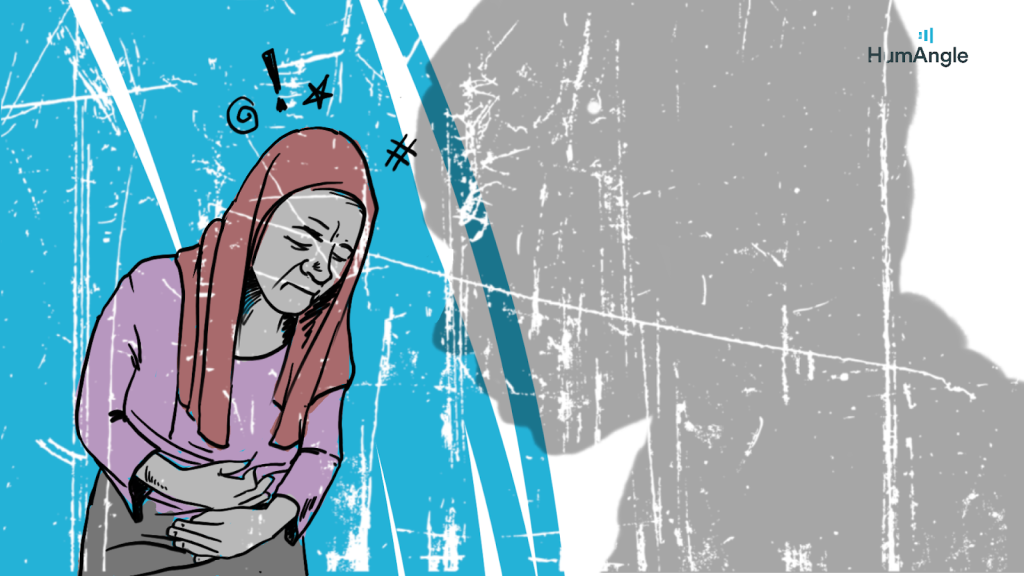
Uvie also shared her own lingering trauma with the healthcare system as she developed anxiety and fear towards the medical system.
“Even though before then I had never experienced sexual assault in the hospital, I recalled that since I was a teenager, every single time I ran a test that had to do with exposing any part of me, afterwards, the male specialists would usually ask for my number, every time, without fail. I used to do quite a few lower abdominal scans because of cysts,” she said.
This led her to start avoiding hospitals, especially government facilities. One time, another doctor attempted to take her sample without a chaperone, and she screamed as loudly as she could until he had no choice but to call in another female doctor before the sample could be taken.
“I still hate hospitals and do my research before visiting a new facility. Now I have a specialist I like, and the last two times I’ve moved houses, I made sure to stay within walking distance of that hospital,” Uvie said, adding that she feels safer with her decision, and the attempts to protect herself have proved helpful.
While Uvie’s experience highlights how vulnerable patients can be during medical examinations, younger women and girls face even more complex dangers — sometimes masked as care or kindness.
Grooming and statutory rape
After a failed suicidal attempt that led to her being admitted to a hospital in Ogun State, southwestern Nigeria, 16-year-old Angela Adeshola*, who was diagnosed with bipolar disorder the previous year, met a doctor she believed to be kind. He was in his mid to late twenties, doing his housemanship at the hospital at the time, and living within the school accommodations.
“While I was still on admission in the hospital, he kept on calling me. He asked me out a few times, but I told him I had a boyfriend. He even suggested that I break up with my boyfriend, which I refused,” she recalled.
Chioma, the psychologist, describes this incident as grooming, especially considering the age and power dynamics between Angela and the doctor.

“Grooming is a manipulative process an abuser uses to gain the trust and emotional dependence of a victim to exploit them. It can lead to sexual, verbal, emotional or physical abuse. They usually would identify the victim they want to exploit, they then try to gain the person’s trust, mostly to fill in the gap that is lacking in their lives, then they would try to fulfil that person’s need, and then they usually try to isolate the person, which gives them power over the victim,” she explained.
Chioma added that most times, people don’t recognise they are being groomed, because the groomers tend to gaslight their victims, accusing them of overreacting or emphasising what they do for them. They also tend to give excessive gifts even when victims don’t need them.
“They also try to cross or disrespect your boundaries, and they will guilt-trip you into lowering your guard. Grooming is harmful because it gives room for exploitation, affecting your self-worth, trust, and self-esteem. Robbing you of your identity and genuineness, sometimes it doesn’t give room for you to see the world any differently than what they show to you,” Chioma noted.
The doctor visited her often while she was still in the hospital, and the day she was discharged, he invited her to his place. At first, she refused, but he was able to convince her eventually. It was there that he raped her.
“I was telling him to stop and asked him what he expected me to tell my boyfriend, but he didn’t answer me,” Angela recounted.
After that incident, she couldn’t walk properly, and he demanded that she try and “walk better” because of the school security officers around his accommodation. She forced herself to fix the way she walked, ignoring the soreness and pain.
When they got to his car that evening, he began to make advances at her again. Due to what had happened earlier, she believed there was no point holding back on his advances and therefore agreed. For a long time, she held the belief that the latter incident was “consensual” despite her being underage at that time.
He then bought her an after-sex pill, took her to eat, and they “agreed” not to tell anyone what had happened. He also insisted that she delete all their exchanged messages and encouraged her to meet again. At first, she didn’t recognise that what happened was statutory rape. She even felt grateful for his “kindness” and sent him a “thank you” text afterwards.
The second time it happened, his tone started to change. “He started saying what we were doing was wrong, and he also deleted his number from my phone. He even said that I set him up, and he knows the truth would come out someday,” she recounted.
Around that time, Angela brought up what happened with her psychologist, who demanded she tell her who the doctor was and informed her that what happened was statutory rape, as she was too young to give consent. At first, she did not feel safe enough to name him, but she was later pressured into giving in. However, she wasn’t sure how that was handled, as it wasn’t brought up again.
When HumAngle reached out to the hospital to get their perspective on the issue, they at first claimed he never worked there, but later told us to “please find a way to contact the said doctor”, after we presented our investigations.
Section 31 of the Child’s Rights Act defines rape as unlawful intercourse with a child under the age of 18, where lack of knowledge of the child’s age is not a valid defence. Also, section 221 of the Criminal Code applicable to the southern part of the country defines defilement as sexual intercourse with a child between 13 to 16 years. In this case, “consent” cannot be claimed to be given if the child is underage, even if they seemingly “agreed” to it.
“A few months later, my parents found out what happened to me, they refused to tell me how they found out and after another event happened to me in the school, they removed me from that university,” Angela recounted.
She was later admitted to a different psychiatric hospital shortly after leaving the school. There, she told the psychiatrist about the incident, and the hospital wanted to take it up as a statutory rape case. It felt safer to speak out openly to this new doctor because it wasn’t her school environment where information could leak, especially after she confided in two people and they told others.
“I really don’t know what happened, but what the doctors there told me is that they tried reaching his number for a long time, but he didn’t pick up, and when he eventually did, he denied it. I had to start over in a less reputable university after wasting two years in my previous school, and the whole event really damaged a part of me,” Angela lamented.
The incident made her hate herself and affected her self-worth. She started to believe she was a terrible person and didn’t deserve anything, and it affected the way she perceived men, especially male doctors, leading to suicide attempts. She texted him after the last incident and told him to stop sleeping with his underage patients, among other things, but he only demanded to know ‘what she wanted from him.’
HumAngle found that the doctor is still practising at a federal government-owned hospital in the country’s North West.
During this investigation, HumAngle was able to track his identity and find details about him, including his LinkedIn account, using the details we got from the source. We also took steps to establish his identity by asking Angela to identify him among several other pictures of other people. She picked out his picture twice.
When HumAngle reached out to him for clarification on the allegations, his legal representative sent a response denying the allegations.
A surgical violation
For some survivors, the trauma happens not in secret meetings but in brightly lit operating rooms, where trust and vulnerability are most exposed.
In 2021, Firdaus Akin* found an unfamiliar growth in her right breast while she was lying on her chest one evening. However, she didn’t seek medical help until a year later.
Her mother first took her to a female doctor who said the diameter was big and needed to be removed through surgery. Naturally, she was worried, but she convinced herself everything would turn out right in the end.
The female doctor could not do the surgery, and she struggled to get a female surgeon in her city. As a practising Muslim who covers from head to toe, it was not an easy decision to open up in front of a strange man, but she didn’t have a choice, as prioritising her health was paramount.
The family doctor delivered all her mother’s children. As an adult, Firdaus visited his hospital only a couple of times and had no strong connection to him. Her parents’ financial situation was the main reason they used his hospital because he allowed them to pay back the amount over a stretch of time.
She innocently believed that his sharing the same faith would make him understand her awkwardness and reluctance better, but instead, he started making fun of her shyness, alongside comments that made her uncomfortable.
“He would also ask stupid questions like if I have pubic hair, and would make reference to the hair on other parts of my body. I returned home crying after the first check-up, but my mum was very dismissive. She even said my breast is not even that big or special for me to be making so much ruckus about nothing, and even asked if I would have preferred to die instead,” she recounted. Her mother’s reluctance to understand her hurt her deeply, even though she didn’t expect much from her due to their troubled history.
According to Dr Aisha, “If the doctor touches areas not related to the problem or makes comments that feel personal rather than professional. Simply put: if something feels ‘off,’ it is important to take that feeling seriously. Trust your intuition and don’t feel threatened because the practitioner is a professional. If at any point you feel your boundaries have been crossed, you have the right to speak up and ask the doctor to stop immediately.”
She emphasised that doctors are only supposed to do what is medically necessary as regards the specific condition of the patient and what the patient has agreed to.
“If a doctor tries to examine you without explaining why, or performs something you didn’t consent to, or if they seem evasive when you ask what the procedure is for or dismiss you when you raise concerns or show signs of discomfort, and the physician seems adamant without properly explaining why it’s needed, you should get concerned,” Dr Aisha explained. “Good doctors want their patients to feel safe and informed, not confused or pressured.”
Firdaus said the first incident happened during the surgery. “I was put under anaesthesia, and at a point, it started to wear off. I regained consciousness for a bit, only to discover that my scrub was removed and I was left with nothing but my pants on. I later learnt that my scrub was stained with blood and they just made a decision to remove it instead of changing it,” she recounted.
After the surgery, she had to return to the hospital a few times for post-surgery care and in a few instances during the course of examination, the family doctor would touch her inappropriately in places he didn’t need to touch, like her thighs. He would also make crass comments about her breasts.
“One particular day, he ‘checked’ my navel, under my arms, and also proceeded to stroke my nipples in the name of examination,” Firdaus said, adding that she was shocked and didn’t know what to do.
Another time, while changing her dressing after the surgery, he touched the nipple on her unaffected breast and claimed he was just trying to adjust it when she asked him why he was touching her in that manner. She didn’t understand it as harassment at first, but she felt violated and knew he was being unprofessional and crossing boundaries.
Even though sometimes there were nurses around, they were usually focused on their own work, and nobody really paid any attention to them during examinations.
“I am really trying so hard not to cry while recounting this experience because it’s very triggering. But I believe we have to say these things so that people will know what’s going on and so that women in the medical field can step up to those roles,” Firdaus added.
There were times she couldn’t sleep well after the violations; sometimes she had nightmares of someone pulling at her nipples, and she would cry a lot. Even the stretch of time didn’t make that feeling go away, as the nightmares still pop up occasionally.
Fortunately, she hasn’t had more reasons to visit the hospital, and when a health reason pops up, she would rather go to the hospital at her university because she believes there would be more accountability there if something like that were to happen.
“Recently, I experienced anal prolapse. I was scared to go to the hospital because I was worried I would end up needing care or surgery from a male doctor, and I don’t feel safe with them. Instead, I spoke to my roommate, who is a nurse,” Firdaus said. She encouraged her to increase her fruit and fibre intake and also do Kegel exercises, which have been helpful.
Another time, she couldn’t visit a doctor for a menstrual issue because she was afraid she could meet a male doctor who would ask to see intimate parts of her body.
“Some people may say it’s not harassment, but it is definitely unprofessional, and it made me feel violated. I know people may ask why I didn’t speak out, but in all honesty, I didn’t know what to do, and I still feel so stupid for not saying anything, even years later. And because he was an elderly man, I was confused and didn’t know how to react,” she added.
Yet, the breach of professional boundaries isn’t limited to physical procedures. In mental health spaces, emotional manipulation and invasive questioning can be just as violating.
Left feeling violated and unsafe
Even before inattentiveness started to interfere with her studies, 23-year-old Aria Dele* had always felt out of place in the world, but the interference pushed her to take the step to finally get a diagnosis for what she suspected to be Attention Deficit Hyperactivity Disorder (ADHD) at her school’s Teaching Hospital, in Ilorin, North Central Nigeria. The general doctor gave her a recommendation to see a psychiatrist at the hospital.

It started with him inquiring about her background information, which she was willing to offer, but when the questions got to sexual history, she became uncomfortable responding and expressed that. “He was asking how many sexual partners I have had and if I had experienced sexual assault. He was even asking me how my sexual experience felt for me and so many other questions that felt invasive,” she said.
Even when he left the questions and asked other things, he still kept circling back to the same questions. As she expressed her discomfort, she noticed his demeanour started to change, and she could see the visible irritation on his face. Seeing how angry it seemed to make him made her feel more unsafe.
She answered a couple of them. Then, he wanted to know who had harassed her and how she had been harassed. This was especially hard for her because she had lived most of her life trying to make herself smaller to avoid men’s attention due to her experiences with them in the past. “I would try to make my hips and waist smaller and stop them from swaying to protect myself from unwanted attention,” she said.
According to Chioma, one reason that may lead a psychiatrist to ask a client about their sexual history is to rule out any case of abuse, lingering trauma, or understand behaviours or relationships, depending on the presenting complaints, which can be important.
“However, the doctor has no right in that case to go further than that. It can also be seen as victimising the patient, which is unethical and can make them feel unsafe. It is also the wrong way to get the result they were aiming for,” the clinical psychologist explained.
Although Aria felt violated after the experience, she dismissed it and focused on the fact that she at least got it over with.
During the course of her studies, she was required to take classes at different government organisations in the city. Her first place of assignment was the psychiatric clinic.
“This was the course with the most credits in my final year. We were made to observe how the doctors attended to patients to see in practice what we learnt in theory.”
Unfortunately, the first psychiatrist she met that day was the doctor she had seen earlier; he kept staring at her in a way that made her uncomfortable, and she tried to avoid him as much as she could, which led to her missing so many classes.
“I was also worried if he might get upset or vindictive and give a review that might impact my grades. And because I missed some classes, I got a B instead of an A. I never felt comfortable enough to talk about it because the power dynamics felt imbalanced, as he was a consultant. I only told my friend, who advised me not to return to him and to keep my head down in classes,” she said.
The experience made her feel small and uncomfortable, and it triggered previous memories of being sexually violated in different ways in the past: “I felt like he was doing something to me I couldn’t pinpoint at that time, and it seemed to me like he was taking pleasure from hearing about my sexual history and kept trying to squeeze more information.”
This experience made her feel more guarded when interacting with other healthcare professionals and wary of seeing other psychiatrists in the future.
One time in a conversation with some friends who knew the doctor, she asked what they thought about that doctor, and the friend had a lot of good things to say about him, which made her feel more uncomfortable.
“I believe sexual harassment could be what I went through. A small part of me feels like I am exaggerating how violated I felt, making me feel silly and guilty for seeing it as sexual harassment, just because he didn’t put his hands on me, even though I knew it was a very unsafe environment for me then,” Aria said.
This discouraged her from ever seeking a diagnosis again. However, she finally got her diagnosis when her sister paid for her to get one in a private clinic that was giving discounts at that time.
Even routine medical processes, like scans or laboratory procedures, can turn dehumanising when consent and respect are ignored.
For Khadijat Alao*, a sickle cell crisis beyond what she usually experienced pushed her into seeking medical help in August at a government hospital in Kaduna, northwestern Nigeria, where the doctor recommended a scan. During the scan, a male lab technology student was present, and no explanation was given for that, which made her feel uncomfortable. She asked one of the women if he was supposed to be there, and she assured her that he would leave.
“They gave me a scrub to change into, only for me to come back and see him still in the room. I asked again, and the woman said I should not worry about it. But because I insisted, he started throwing a tantrum claiming that he cannot afford to miss the X-ray, that he has an exam or test, and he would be asked about it,” she recalled.
Apart from feeling angry and violated, it also made her feel small and dismissed. “It made me feel like I wasn’t a human being. Like I was a specimen or something. They didn’t prepare me for this and didn’t ask for my consent. I insisted he leave.”
They convinced him to move to a cubicle in the room, and if not for her underwear, the way she was angled would have exposed her vagina to the student: “When the procedure started, he came out of the cubicle, making me feel violated all over again. My leg was open, and one of the other women tried to drag him out, but he kept fighting to be there. I did not feel respected as a human, and that feeling followed me for a very long time.”
She believed she would have at least been mentally prepared if they had told her or asked her beforehand.
A system that fails to protect
These experiences, though different in setting and form, reflect a troubling pattern: a health system where patients, especially women, often feel unsafe, unheard, and unprotected.
Dr Aisha encouraged patients who experience any form of violation in the hospital to write down the details of what happened, including time, place, and what was said or done. “Collect as much evidence as possible. You can report it to the hospital management or, if necessary, the medical regulatory body. If you can’t reach the body, you can report to another physician; they are obligated to report such cases to the medical body according to the code of ethics, which states, a physician shall deal honestly with patients and colleagues, and report to the appropriate authorities those physicians who practice unethically or incompetently or who engage in fraud or deception.”
“And don’t hesitate to seek emotional support or professional counselling from trusted people. No one should feel ashamed for speaking out. Healthcare is meant to protect you, not harm you,” she added.
*All asterisked names have been pseudonymised to protect the anonymity of the victims.
Olivia Attwood sends warning to GK Barry as she hits out at ‘fake friends’

OLIVIA Attwood appears to have sent a stark warning to fellow Loose Women panelist GK Barry after she hit out at “fake friends.”
The Love Island alum, 34, didn’t hold back as she went on a comment ‘liking’ spree on Instagram.
It came just hours after Olivia took a swipe at an “attention seeking” pal and admitted it had been “awful.”
While the TV star didn’t specify who she was talking about in a new clip uploaded to TikTok, but referred to them as a “tick.“
Yet fans suspected she was talking about former buddy Ryan Kay, after she told of their fallout earlier this year.
And she dropped another huge hint when she began to like fan comments warning podcast host and Loose Women panelist Grace about him, after he styled her for the ITV daytime series.
Olivia liked comments about him moving on to Grace and how he needs to be warned, as well as how Grace should be worried.
One said: “Ryan … Grace should be worried.”
Another wrote: “He’s moved onto Grace now she needs to be warned.”
The Bad Boyfriends anchor also liked a message which read: “Never liked the guy, he did the same with Ester from Cheshire housewives. Used her for personal gain then moved on to the next.”
She then commented: “So small. Literally they lived in my house, I paid for holidays, dinners, nights out, more gifts than I can even count.”
We previously told how reality TV star Olivia had fallen out with her former assistant and stylist Ryan – who both share matching tattoos and were once inseparable.
LIV’S RANT
Over the weekend, Liv’s fans told how she looked “proper hurt” in her video rant.
She captioned her clip: “I feel like so many people will have gone through this experience.”
Olivia then said: “We all know this person who can’t keep a job, they can’t keep a friend, they have no long-term friends that they can keep for more than a year.
“But it’s never their fault. They’re always the victim. This is a professional victim. You watch the cycle play out and you can now see the people who were before you and see your part in the cycle.
“And then you can see who they’ve now moved onto next.”
The star went on: “I always think that with these kinds of people, they don’t move on to new friends, but instead they move on to new hosts.
“They’re like a tick – a tick has to be attached to you and drink your blood – and it has to have a host body. So, once it leaves your body it’s going to go and host on another body.”
PAL FALLOUT
Meanwhile, last month, she broke her silence on her unexpected fallout with Ryan.
Former Love Island star Olivia revealed the reason on social media during a Q&A with fans.
One asked: “What happened with your mate?”
She responded: “I am just very hurt if I’m honest. Prior to what you might have read.
“I had to respect myself and enjoy a line. It was something that played out over a few months.
“And I guess I hadn’t seen things that I should of… I think? “
She continued: “I give everything (in every sense of the word) to friendships and don’t let very many people in so it suckkkkks.
“It’s not something I can really explain on a story but I will at some point?”
She then hit out at Ryan in a cryptic message and confirmed their friendship’s turned toxic.
3 Reasons Not to Open a CD in October 2025, Even With Rates Around 4.00%
Certificates of deposit (CDs) might seem like a good place to keep your money, especially with interest rates on the decline. But the truth is that in most cases, your cash is better off elsewhere.
If you’re looking for flexibility and long-term growth — or if you’re carrying high-interest debt — there are much better uses for your money. Here’s what to know.
1. High-yield savings accounts are more flexible, with similar returns
Right now, our favorite high-yield savings accounts (HYSAs) are paying APYs that rival top CDs — and you don’t need to lock up your money to earn them.
Just like traditional savings accounts, HYSAs let you access your money anytime, and they’re FDIC-insured up to $250,000. The best banks also don’t charge monthly fees or have account minimums.
Add it all up, and it’s pretty clear: HYSAs are the perfect place to store your emergency fund and short-term savings.
Want to earn a high APY while keeping access to your cash? See our full list of the best high-yield savings accounts available now.
2. Stocks offer more long-term growth
For money you plan on investing for the long haul, a CD isn’t the best option, either.
Consider this: Over the last 30 years, the average return of the U.S. stock market was 9% per year, as measured by the S&P 500 Index — more than double the rate of the best CDs.
CDs might sound appealing because they have a guaranteed return — but still, that return is limited. Over the course of years and decades, something like an S&P 500 index fund will almost definitely earn more.
Ready to get started? See our list of the best online brokerages today.
3. Paying off debt is a better use of your cash
Finally, if you have high-interest credit card debt, even the best CDs can’t help you put a dent in it.
That’s because the average credit card APR is around 21%, according to the Federal Reserve. Saving with a CD while carrying high-interest debt is always a losing bet.
Make sure to pay off any and all debt before you think about a CD. If you owe credit card debt with a 21% APR, you could think of it as getting a guaranteed 21% return for paying it off.
Once your high-interest debt is gone and your emergency fund is in place, then you can start looking into CDs or other savings tools.
Want an easier way to pay off debt? Check out our picks for the best balance transfer cards available now.
CDs can be smart — sometimes
CDs can still be a solid way to save in the medium term. But only if you:
- Have no high-interest debt
- Have three to six months of expenses in a savings account
- Are already investing in stocks long-term
Does that sound like you? Compare the best CD rates now to start saving today.
The European city that’s best place in the world for food – not France or Spain
The destination has been named the best city in the world for food and among 30 top foodie favourites across the globe
When it comes to culinary delights, most people’s minds wander to Italy’s pasta, Japan’s sushi or Mexico’s tacos. However, a recent study by TasteAtlas has revealed the top foodie destinations around the globe.
The team analysed nearly half a million ratings from 17,073 cities on its database. Interestingly, many of the top-rated locations are just a short hop from the UK, with the majority of the top 10 situated in Europe.
Naples clinched the top spot, thanks to its world-renowned dishes such as pizza, lasagna and macaroni, reports the Express.
But Naples wasn’t the only Italian city to make the cut. Milan bagged second place, with its famous risotto and panettone, not to mention the iconic Campari cocktail that originated there.
Italy continued its gastronomic dominance with Bologna securing third place, known for its spaghetti bolognese, ragu and tortellini.
Despite the Italian-heavy list, other global cities made the top 10, including Paris, Vienna and Mumbai.
Unfortunately, the UK didn’t make it into the top 30, along with Hong Kong, Barcelona, Ho Chi Minh City, Bangkok, and Amsterdam.
Here are the top 30 best cities for food:
- Naples
- Milan
- Bologna
- Florence
- Mumbai
- Rome
- Paris
- Vienna
- Turin
- Osaka
- Madrid
- New York
- Genoa
- Nice
- Lima
- Jakarta
- Kyoto
- Gaziantep
- Ferrara
- New Orleans
- Catania
- Singapore
- Venice
- Istanbul
- Tokyo
- San Francisco
- Lisbon
- Guadalajara
- Chicago
- Philadelphia
Katie Boulter: British number three beaten by Eva Lys in Pan Pacific Open
British number three Katie Boulter’s poor run of form continued with a straight-sets loss to world number 44 Eva Lys in the first round of the Pan Pacific Open in Tokyo.
Boulter, 29, was beaten 6-2 6-1 in just one hour and 14 minutes by the 23-year-old German.
After coming through two rounds of qualifying, she was the only British player in the main draw after Emma Raducanu withdrew, ending her season early through illness.
The Briton was only able to win 50% of the points on her first serve and was broken five times by Lys.
This latest defeat caps a disappointing run of form, which has seen the former world number 29 unable to progress beyond the second round of a tournament since the Nottingham Open in June.
It also comes five days after the Briton lost in straight sets in the second round of the Japan Open by world number 51 Sorana Cirstea.
Elsewhere, British number four Fran Jones was beaten in straight sets by China’s Wang Xiyu in the first round of the Guangzhou Open.
Seventh seed Jones was broken four times in the match as she lost 6-4 6-4 to the world number 163.
LIVE: Amazon Web Services outage hits Snapchat, Fortnite, other apps, sites | Technology News
Connectivity issues for many companies around the world disrupted as outage hits Amazon Web Services.
Published On 20 Oct 2025
Global Markets Rally on China Growth Surprise and AI Earnings Hopes
Global stock markets kicked off the week on a strong note after data showed China’s economy performing better than expected despite ongoing trade tensions with the United States. Investor optimism was also buoyed by expectations of Japanese stimulus and a strong outlook for artificial intelligence (AI) companies during the U.S. earnings season.
Why It Matters
China’s stronger-than-forecast GDP growth (1.1% in Q3) and industrial output gains (6.5%) helped calm fears about a global slowdown triggered by U.S.-China trade frictions.
Meanwhile, optimism surrounding AI-driven tech earnings particularly Nvidia continued to lift global equities, reinforcing investor belief in the sector’s long-term profitability.
At the same time, expectations of further U.S. Federal Reserve rate cuts kept global borrowing costs lower and strengthened risk appetite.
Asia: Japan’s Nikkei surged 2.8% to a record high amid hopes of stimulus under likely new Prime Minister Sanae Takaichi.
Europe: The Stoxx 600 rose 0.7% in early trade.
U.S.: Futures pointed to gains of 0.4–0.5% for the S&P 500 and Nasdaq.
Bonds & FX: Treasury yields dipped to 4.02%, while the euro climbed to $1.1662 on a softer dollar.
Commodities: Gold stayed elevated around $4,266/oz, reflecting persistent geopolitical caution, while Brent crude slipped 0.4% to $61.02 on OPEC+ supply signals.
Jason da Silva (Arbuthnot Latham): “There’s still enough scope for healthy returns from big tech; I’m not selling the AI theme yet.”
Kevin Thozet (Carmignac): Warned of “froth” in some AI stocks but said it’s too soon to exit the trade.
Lorenzo Portelli (Amundi): Predicted gold could rise to $5,000 as central banks diversify reserves and the dollar weakens.
What’s Next
Looking ahead, investor attention will pivot to major U.S. corporate earnings that could shape the market’s next moves. Reports from Tesla, Netflix, Procter & Gamble, and Coca-Cola will offer a clearer picture of consumer demand and how well companies are weathering tariffs and inflation pressures. On the policy front, traders expect the Federal Reserve to deliver two more rate cuts by December, a move that could further support equities, weaken the dollar, and sustain global liquidity. However, the upcoming U.S.–China tariff truce deadline on November 10 looms large, and any breakdown in talks could quickly reverse market optimism. Investors will also watch for fresh data on inflation and labor markets to gauge how long central banks can maintain their dovish stance.
With information from Reuters.
I live in the ‘Midland’s mecca’ of traditional Christmas Markets
I LIVE between four of the biggest Victorian Christmas markets in the UK, and this year they all take place over one weekend – with a brand-new one popping up nearby for the first time.
The Midlands mecca of Christmas Markets are Worcester, Lichfield, Matlock and Stratford-Upon-Avon.
To make the most of the Midlands markets, I would suggest checking out Lichfield on Thursday December 4.
It’s the first year for this four-day event and takes just 10 minutes by train from Tamworth, so you could do a couple of hours in the evening there to kickstart your weekend of wandering the street stalls.
Tamworth has two Premier Inns, which make a great budget base with double rooms starting at £41.
There’s also a Travelodge within walking distance in the railway station, with double rooms for £57 that weekend.
Tamworth’s got plenty of other Christmas attractions too if you need a break from shopping. With the chance to enjoy sledging, a mini panto and snow trail at Santa’s Winter Wonderland at the SnowDome indoor ski slope.
Tamworth Castle will also be hosting Father Christmas fun, with tickets costing £17 for children and £12.50 for adults, which includes a gift and a bespoke keepsake.
Plus it has easy rail access to Birmingham’s German market, one of the biggest in the UK, if you just can’t get enough of the festive shopping vibe.
The next day, head to Worcester, 50 minutes from Tamworth by train.
Established in 1992, this is the longest running of the fairs with more than 200 stalls to peruse.
It has costumed characters including Sherlock Holmes and Scrooge roaming the streets, as well as stilt walkers, live music and a carousel, and after dark it feels like you’ve stepped into the pages of a Christmas Carol.
If you’re after something a little bit different, check out the Gin Lane immersive experience on either the Friday or Saturday evening to see the dark side of Victorian street life.
Then take a drive down to Stratford-upon-Avon on Saturday 6, with Morris dancers and live entertainment aplenty.
Car parking does get full up quickly, but there’s a park and ride scheme at Bishopton.
You can pop into some of the Shakespeare houses while you’re in town, catch a play or take a stroll along the river to get away from the crowds.
If you’re relying on public transport to get you around, you’d be best to head to Matlock on Sunday December 7, as it takes an hour by rail from Tamworth, which is quicker than the train on other days.
There’s also a grand finale Christmas fireworks display on the Sunday at 5.30pm, which would be the perfect way to celebrate the end of your market marathon if you’ve managed four days of bagging bargains, while tucking into festive treats like roasted chestnuts and mulled wine.
You can even arrive in style if you’re taking the car, as you can park free at Rowsley South station and then take a heritage train run by Peak Rail to get to the Victorian market.
Chatsworth House is just half an hour away from Matlock by bus or car and will be dressed to impress as it hosts its own Christmas attractions, including a festive market, throughout November and December.
So you could even squeeze in an extra outing while you’re in Matlock if you’re in the mood.
If feeling like you’ve stepped into the pages of a Dickens story is your ideal start to the season, get planning your trip to the merry markets in the Midlands to get your festive fix.
Haunted Hollywood landmarks and the ghost stories behind them
The site of one of L.A.’s most notorious murder-suicides, Greystone has been supposedly haunted ever since. In February 1929, owner Ned Doheny, son of oil tycoon Edward Doheny, was shot and killed by his personal secretary and childhood friend Hugh Plunkett who, minutes later, shot himself. The motive for the crime was never discovered, though rumors posited a sexual relationship, a dispute over Plunkett’s salary and, most plausibly, the pair’s involvement in the Teapot Dome scandal. Doheny’s widow lived in the mansion until 1955, after which a series of sales almost led to its demolition, prevented by an 11th-hour purchase by the city of Beverly Hills, which converted the house into an event venue and the grounds into a park. Since then, there have been many reports by workers of mysterious sounds, the smell of rotting flesh and shadowy, spectral figures. That has not stopped it from becoming a favored filming spot for film and television, from “The Amazing Race” to “There Will Be Blood,” and a popular wedding venue.
Show more Show less
European hotspots are 22C right now with £15 flights – perfect for escaping rainy UK
As Storm Bram heads towards the UK, bringing with it rain, cold and strong winds, it may be wise to turn your attention towards the parts of Europe that are a little cheerier
Believe it or not, parts of Europe a short, cheap flight away from the UK are currently enjoying mid-20s temperatures and sunshine.
This year it feels as if the PR representatives for autumn have been working overtime. ‘Cosy season’ advocates have been pushing the line that it’s great that summer is now over and the six months of cold, darkness and wet ahead are to be embraced, not feared.
If you’re like me, then this comes across as a terrible and unconvincing lie. Crunchy leaves underfoot may be nice, but they’re no replacement for warmth and sunshine. Particularly when a horrifying weather front such as the Dracula-themed ‘Storm Bram‘ nears, threatening to bring 70 mph winds and freezing temperatures with it.
Luckily, there are plenty of places on the European mainland that are not only enjoying much better weather, but are a short, cheap flight away. Here are our pick of the bunch:
Lisbon, Portugal
Temperature today: 22C
Cheapest flight this week: £24
Not only is the Portuguese city sunny and blessed with good weather, but it is also a famously happy spot.
Lisbon recently claimed the top spot in the Holiday Happiness Index, claiming the title of the world’s happiest holiday destination. Analysis shows that the vibrant Portuguese capital excels across multiple feel-good factors, with its food scene standing out in particular. Walkability is another of Lisbon’s mood-boosters. The city is compact and easy to navigate on foot, with panoramic viewpoints that reward slow exploration.
Palermo, Italy
Temperature today: 22C
Cheapest flight this week: £20
Palermo is an incredible city to visit, especially in the shoulder season months of May, October and September when the weather begins to cool a little. Among the many highlights in the Sicilian city is the incredible Palazzo Butera, which was recently restored from a crumbling wreck to a public museum for the Valsecchi art collection. The city’s food market has recently received criticism for focusing more on fast food and less on traditional produce. However, there are many excellent, authentic restaurants down Palermo’s back alleys that offer up classic fare such as the pizza-adjacent sfincione.
Tirana, Albania
Temperature today: 21C
Cheapest flight this week: £15
Albania’s reputation as a tourist destination has taken a hugely positive turn in recent years, as increasing numbers opt for a bargain break in a country whose tourist board insists is ‘the European Maldives’. Visitors can enjoy luxury stays without breaking the bank, with beachfront apartments available for as little as £20 per night. Dining is equally budget-friendly, with a full meal and drinks often costing around £15. The Mirror took a trip to Tirana last year to see how far £100 can take you.
Rome, Italy
Temperature today: 22C
Cheapest flight this week: £19
Who could resist a trip to the Eternal City, where the weather seems to be eternally good and the chances of spotting the new pope are higher than anywhere else in the world. Earlier this autumn, the Mirror visited Trevi Fountain, which has become one of the most overcrowded tourist attractions in the world. The chances of stopping off there without being overwhelmed by the throngs get higher the further away from summer you go.
Izmir, Turkey
Temperature today: 20C
Cheapest flight this week: £29
Izmir had a tough summer. Wildfires in the region ripped through forests, destroying houses and resorts. Thankfully, the fires were eventually brought under control and the rebuilding job is well underway. The south-western settlement is less well-known than its headline-grabbing neighbours, Bodrum and Dalaman, but just as rich in sun-soaked golden beaches, bustling bazaars and excellent restaurants.








